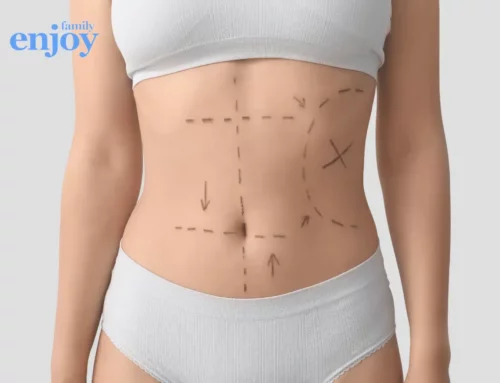
Definition of a neck lift
A neck lift, also known as a lower rhytidectomy, is a cosmetic surgery procedure designed to improve the appearance of the neck by tightening and smoothing the skin, muscles and underlying tissues. It is generally performed on patients who are bothered by sagging skin, excess fat deposits or visible banding in the neck area.
Neck lift: procedure
The procedure involves making incisions under the chin or behind the ears, or sometimes both, to access the underlying tissues. The surgeon then tightens the muscles and removes excess fat and skin, before closing the incisions with sutures. In some cases, liposuction may be used to remove excess fat from the neck area.
Neck-lift surgery is generally performed under general anesthesia and can last from two to four hours, depending on the extent of the procedure. Recovery time varies from person to person, but most patients are able to return to work and resume their normal activities within two weeks.
Risks of a neck lift
As with any surgical procedure, there are risks associated with a neck lift, including bleeding, infection, scarring and nerve damage. Patients are advised to discuss the risks and benefits of the procedure with their surgeon before making a decision.
Overall, neck lift surgery can be an effective way to improve the appearance of the neck, but it's important for patients to have realistic expectations and understand that results may not be permanent.
Minimally invasive alternatives to neck lifts
Minimally invasive neck lift is a less invasive alternative to traditional neck lift surgery that uses small incisions and specialized techniques to achieve similar results with less downtime and scarring.
There are several minimally invasive neck lift techniques, including the following:
- Liposuction: This technique involves removing excess fat from the neck and jowls through small incisions using a cannula.
- Thread lift: This technique involves inserting small threads into the skin of the neck and pulling them upwards to lift and tighten the skin.
- Laser skin tightening: This technique uses lasers to heat the skin and stimulate collagen production, resulting in firmer, younger-looking skin.
- Ultrasound skin firming: This technique uses ultrasound energy to heat the deep layers of the skin, stimulating collagen production and tightening the skin.
Compared to traditional neck lift surgery, minimally invasive neck lift techniques generally require less downtime and present a lower risk of complications. However, they are not suitable for everyone, and results may not be as spectacular as with traditional surgery.
It's important to consult a qualified and experienced plastic surgeon to determine which type of neck lift is best suited to your personal needs and goals.
See also our article on tummy tuck liposuction.




